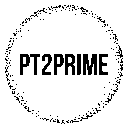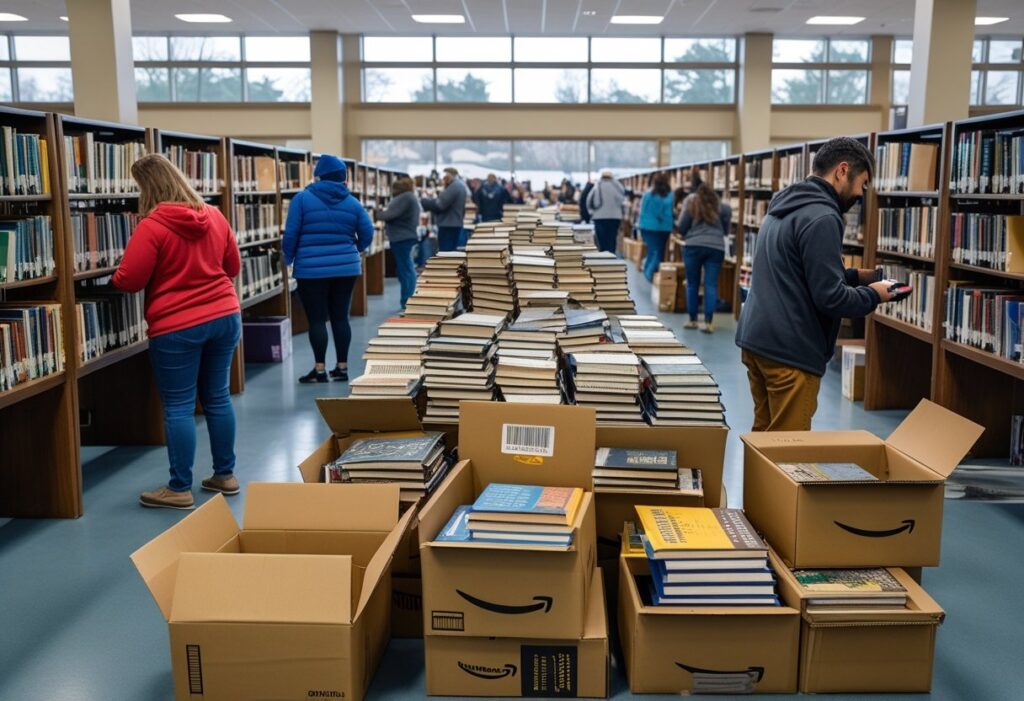I got into selling books from thrift stores because, honestly, it just felt like the easiest way to try Amazon FBA without draining my wallet. Every store feels like a treasure hunt—sometimes you walk out with nothing, but other times, you find gold among the castoffs.
You can turn low-cost thrift store finds into steady profit when you know where to shop, what to scan, and how to stay organized.

I like stores that swap out inventory a lot, and I’m always on the lookout for carts of new arrivals or color tags that mean fresh stock. Scanning apps are a lifesaver—one quick scan, and I know if a book’s worth my time or not.
Logging each book in a spreadsheet right after I buy it helps me keep things straight later. It’s honestly the only way I remember which stores are worth coming back to.
Routines help. I hit certain stores on certain days, stick to my scanning habits, and jot down any tips I get from staff about restock times.
- Profits come from knowing where and when to shop
- Scanning tools and tracking systems save time
- Consistency and small habits build long-term success
Finding the Right Thrift Stores

When I first started, I was surprised at how different each thrift store can be. Some have shelves packed with solid donations, others… not so much.
I like to mix it up—library sales, garage sales, estate sales, and even poking around Craigslist for bulk book deals. The prices at these places are usually rock-bottom, which keeps my risk low.
Discount stores and clearance racks are worth a peek, especially if I’m already in the area.
Here’s a simple table I use to keep track of where I go and what I find:
| Store/Source | Restock Day | Typical Finds | Notes |
|---|---|---|---|
| Local Thrift #1 | Tuesday | Textbooks, Nonfiction | High competition |
| Library Sale | Monthly | Mixed genres | Very low prices |
| Estate Sales | Weekends | Vintage books | Cash only |
Restock days matter more than I expected. If I’m there right after new donations hit the shelves, my odds of finding something good go way up.
At home, I toss my finds into bins labeled by store and date. It’s not fancy, but it saves me a headache when I’m ready to list on Amazon and need to remember what I paid.
What to Look For
When I’m scanning shelves, I zero in on books with steady demand, overlooked gems, and anything that looks like it could fetch a higher price. Sales rank, condition, and a sense of what’s trending all play a part in what makes it home with me.
Genres
Not every genre is worth the trouble. Fiction can move, but unless it’s a big-name author or a hot series, the profit’s usually slim.
Non-fiction? That’s where I see more value. I’m always looking for self-help, business, health, and hobby books.
These tend to stay relevant and often sell for more. Religious and spiritual titles, especially study guides, are surprisingly consistent sellers too.
Mass-market paperbacks are usually a pass unless they’re pristine and riding a trend. I stick with trade paperbacks and hardcovers—Amazon buyers seem to prefer them, and the resale prices reflect that.
A quick check of the best seller rank (BSR) on Amazon helps me avoid getting stuck with slow movers.
Textbooks
Textbooks are a goldmine sometimes. Even the older editions can sell if the subject is still in demand—think math, nursing, law, that sort of thing.
I always scan textbooks, even if they look ancient. Some still surprise me with their resale value.
Back-to-school months like August and January are when sales spike, so I don’t mind holding onto textbooks for a bit if it means a better payoff.
Condition’s important. Too much highlighting or missing pages can tank the price, but honestly, most students just want something affordable and complete.
I double-check the numbers to be sure the profit’s there after Amazon takes its cut.
Hidden Gems
Some of my best flips have been books most people skip. No-barcode books, weird niche topics, or local history—there’s less competition and sometimes crazy high value.
If there’s no barcode, I’ll type in the ISBN or use a cover scan with ScoutIQ or the Amazon Seller app. It’s a bit slower, but worth it for the oddball finds.
Clearance carts and fresh donation bins are my favorite spots for hidden gems. Cookbooks, out-of-print guides, quirky collectibles—they don’t always sell fast, but the profits can be great if you’re patient.
Organizing and Tracking Finds
Right after I leave the store, I log every book into a spreadsheet—title, what I paid, condition, and what I think it’ll sell for. It’s not glamorous, but it keeps me sane.
At home, I sort books by category: textbooks in one bin, non-fiction in another, collectibles get their own shelf. Makes listing so much faster later.
Staying organized means I don’t accidentally let good books collect dust in a corner.
How to Use Scanning Apps Efficiently
Scanning apps are my secret weapon. The Amazon Seller App is free and does the basics—prices, sales rank, fees—right from my phone.
I use Keepa too, just to peek at price history and avoid overpaying for something that’s been tanking.
If there’s a barcode, I scan it. If not, I’ll punch in the ISBN or try the cover scan. It’s a bit of a pain, but older or niche books are often worth the extra minute.
To speed things up, I set my app with custom “buy” triggers—basically, it flashes a quick yes or no based on my profit and sales rank rules. Cuts down on decision fatigue.
Here’s a quick look at the apps I keep in rotation:
| Tool | Best For | Notes |
|---|---|---|
| Amazon Seller App | Checking prices & fees | Free, easy to use |
| Keepa | Price history & trends | Helps avoid overpriced buys |
| ScoutIQ / Scoutly | Fast scanning & triggers | Paid, but saves time |
After each trip, I sort my finds into “ready to list,” “needs cleaning,” and “research later” piles. Then I update my spreadsheet—title, cost, store, all that.
It’s not fancy, but it keeps me from losing track of what I bought or letting stuff pile up.
Timing Your Visits for the Best Inventory
Timing really does matter. I’ve noticed most donations come in over the weekend, so Mondays and Tuesdays usually mean fresh shelves and less competition.
Early mornings are best. If I’m there when the doors open, I get first crack at whatever new stock just went out.
Holiday weekends and seasonal cleanouts—think early January or spring—bring in bigger hauls, since people are decluttering. I try not to miss those windows.
I keep a little table in my notebook or on my phone to track which stores restock when, and if they run discount days:
| Store Name | Restock Day | Best Time | Notes |
|---|---|---|---|
| Goodwill A | Monday | 9 AM | Large book section |
| Salvation Army | Tuesday | 10 AM | Frequent sales |
| Local Thrift | Friday | Afternoon | Small but quality finds |
Having these notes means I’m not just wandering around hoping for the best. It’s a small thing, but it makes my sourcing trips way more efficient—and, honestly, a lot more fun.
Building Relationships with Staff for Insider Tips
Honestly, being friendly with thrift store staff makes a bigger difference than most people realize. Just a quick smile or a bit of genuine conversation can build real trust—and it’s just nice.
If I ask politely, staff sometimes let me know when new stock hits the shelves or which days they do restocks. That info helps me time my visits and gives me a shot at fresh finds before the crowds roll in.
Occasionally, someone will even nudge me toward sections where the good stuff—textbooks, quirky non-fiction, or old editions—tends to show up. I never expect special treatment, but being decent does seem to make folks more willing to help out.
To keep my finds straight, I use a super simple system:
| Step | What I Do | Tool I Use |
|---|---|---|
| 1 | Record book details (title, cost, condition) | Notebook or phone app |
| 2 | Sort by category (textbooks, fiction, niche non-fiction) | Spreadsheet |
| 3 | Note where I bought each book | Store name column |
| 4 | Mark books as listed or sold | Spreadsheet checkboxes |
This setup helps me spot which stores actually pay off. Over time, I see patterns—sometimes surprising ones—and can decide where to spend my time.
Common Mistakes New Sellers Make
When I started out, I used to grab books just because they seemed cool or caught my eye. Turns out, demand and selling price matter way more than my personal taste.
A book listed at $20 that barely moves just ends up hogging shelf space and tying up cash. Lesson learned.
Another biggie: forgetting about Amazon fees and shipping costs. That $15 sale isn’t so great if, after FBA fees, seller fees, and shipping, you’re left with two bucks.
Now, I always check the price difference between merchant-fulfilled and FBA offers to keep my margins in check.
It’s tempting to chase high-ticket books, but sometimes the humble $15 book that nets $8 profit is the real winner. I try not to get distracted by big numbers and focus on what actually ends up in my pocket.
Staying organized tripped me up at first too. I’d toss books in random boxes, then spend ages hunting for them later.
Here’s the quick system that finally saved my sanity:
| Step | What I Do | Why It Helps |
|---|---|---|
| 1 | Label boxes by store and date | Easier to track sourcing spots |
| 2 | Keep a spreadsheet of buy price | Helps calculate profit margins |
| 3 | Note condition and prep needs | Saves time when listing |
Organization keeps things moving, cuts down on headaches, and lets me see which stores actually deliver the best returns.
Frequently Asked Questions
For me, it’s about spotting books with real resale value, using scanning tools to avoid wasting time, and picking stores that consistently have solid inventory. Staying organized and keeping costs down helps keep things profitable—even when the market gets weird.
What are the best ways to identify profitable books when shopping at thrift stores?
I look for books with a decent sales rank on Amazon—something that actually sells, not just sits there. Textbooks, oddball non-fiction, and niche topics usually outperform mass-market fiction.
Condition matters too. Clean, undamaged books move faster, so I skip the battered ones unless they’re super valuable.
Can you recommend any reliable scanning tools for checking book values quickly?
I stick with the Amazon Seller app since it’s free and gives me sales rank and pricing info on the spot. If I’m moving fast or scanning a lot, ScoutIQ and Scoutly are great—they let me scan barcodes or ISBNs and decide in seconds if a book’s worth grabbing.
How do I determine which thrift stores are likely to have high-quality books for reselling?
I’ll visit a few different shops a couple times to see how often they restock and what kind of donations come in. Suburban or college-area stores usually have better book sections, in my experience.
I keep notes on which locations pay off, so I don’t waste time going back to duds.
What strategies can I use to maximize my profits when reselling books on Amazon FBA?
I try to buy cheap—usually $1–$3 per book—and aim for at least $10 profit after all the fees. Bundling trips saves me gas and time, and honestly, just showing up regularly makes a difference. The more I source, the more chances I have to hit a good batch.
Are there specific types of books that tend to sell better on Amazon FBA?
Definitely. Textbooks, technical manuals, and non-fiction like self-help or business books usually do well. Children’s books in sets or series can be surprisingly profitable too.
I skip mass-market paperbacks and outdated editions—they just don’t move.
What are some tips for beginners to efficiently sort and prepare books for Amazon FBA?
I wipe each book down with a dry cloth and peel off stickers to make them look decent. Then I sort them by condition: “like new,” “very good,” and “acceptable.”
Listing in batches keeps things manageable and saves me a lot of time in the long run.
How do I organize and track my thrift store finds for efficient listing?
I usually keep a spreadsheet handy with the title, purchase price, and store location for every book I pick up. It’s not fancy, but it makes tracking costs and profits way less of a headache.
For storage, I label boxes by the date I sourced the books. That way, I can process and list them in order, and I’m way less likely to lose track of my inventory.


